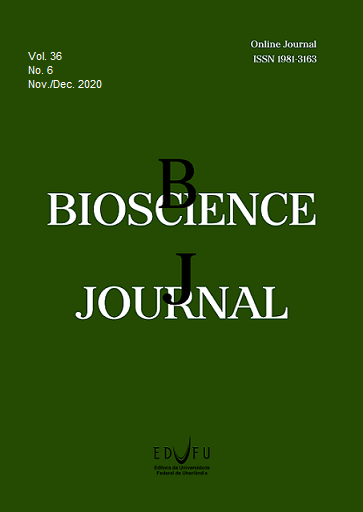Effects of ripening stages and storage durations on resistance parameters of beef type tomatoes: part 1: spring period
DOI:
https://doi.org/10.14393/BJ-v36n6a2020-49951Keywords:
Harvest Date., Vegetable., Damage., Quality. Sensitivity.Abstract
Following the harvest, agricultural products are subjected various negative impacts throughout the way to consumers. Mechanical damages such as color darkening, abrasion, cuts or punctures over the fruit surface are irreversible damages and such damages ultimately end up with significant quality and economic losses. In modern production systems, only a certain portion of the products directly reach from producer to consumers. Majority of these products are subjected to mechanical damages through crush, squeeze, vibration and similar impacts during the harvest and postharvest processes. In this study, Tybeef tomato cultivar grown over the experimental greenhouses of Bati Akdeniz Agricultural Research Institute (BATEM) (control) and 14-193 and 14-206 coded candidate cultivars developed through breeding programs of BATEM were used as the plant material. Resistance parameters of tomato cultivars were determined at 4 different ripening stages (green, turning, pink and red) and 4 different storage durations (4, 8, 12 and 16 days). Resistance parameters decreased with the progress of ripening and storage durations. All measurements and assessments revealed that 14-193 coded candidate cultivar was prominent for resistance parameters.






